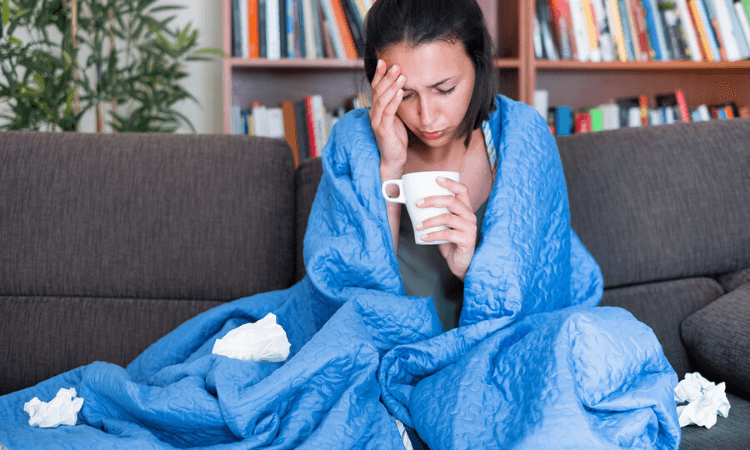
Opiates, also sometimes referred to as opioids, painkillers, or narcotics, consist of a variety of substances. They include both prescription drugs such as morphine, hydrocodone, and oxycodone, as well as illicit street drugs like heroin. People who use these drugs repeatedly are at risk for developing dependence and addiction. For purposes of this article, the terms opioid and opiate will be used interchangeably.
A person who becomes chemically dependent on opioids will experience a need to continue using the drugs to function normally. If they quit taking the drug abruptly or “cold turkey,” they will encounter a variety of unpleasant and sometimes painful symptoms as the body tries to adapt to life without the substance. Moreover, withdrawal symptoms will onset, and physical effects will persist for several days.
Opiate Withdrawal
The symptoms and severity of withdrawal depend on several factors, including the type of drug being abused, the person’s level of dependence, the duration of the addiction, whether they also abuse other substances, and their mental health and medical history. Most symptoms of withdrawal are flu-like and may include chills, sweating, vomiting, and body aches and pains.
Although withdrawal symptoms are not usually life-threatening, they can still produce great physical and psychological distress for the person suffering. Because of the magnitude of withdrawal symptoms, people who are trying to discontinue their drug use on their own may return to using again to avoid the withdrawal process altogether. However, the endless cycle of stopping and returning to drug use can make it more challenging to quit later on.
Attempting to stop using opiates abruptly can be arduous and risky to do alone. For this reason, persons in this situation are generally advised to seek the help of medical detox professionals and addiction specialists to overcome opioid abuse safely and effectively.
Medical detox programs take place in structured and safe clinical environments designed to help patients through the withdrawal process by treating symptoms and reducing cravings. Doctors can also help patients relieve symptoms by gradually tapering them off the addictive substance(s) until they are no longer chemically dependent on it. In many instances, doctors can prescribe certain medications to reduce the number of symptoms and their intensity and curb cravings.
After an individual completes a detox program, their treatment team will likely encourage them to seek therapy and counseling at a rehab center. This is a critical step toward fostering long-term sobriety and preventing relapse. Many detox programs, such as those offered by Recovery in Tune, are located inside rehab centers so that patients are provided with a smooth transition into more comprehensive addiction treatment.
Opiate Withdrawal Symptoms

The symptoms of opiate detox can be relatively mild, moderate, or very severe. Symptoms are typically the worst in patients who suffer from intense drug addiction. Consuming excessive amounts of a drug or doing so for a very long period is most likely to result in the severest of symptoms.
As noted, there are many other factors that also play a part in the development of withdrawal symptoms and the length of time they persist. These factors include all aspects of a person’s current health and emotional well-being, any co-occurring mental health disorders, and how they administered the drug (e.g., orally, by smoking, or injecting).
Within about one day after the last dose, a person will usually begin to encounter a combination of the following withdrawal symptoms:
- Agitation
- Anxiety
- Insomnia
- Muscle spasms, aches or pains
- Runny nose
- Sweating or cold chills
- Stomach cramps and aches
- Diarrhea
- Fluctuating blood pressure
- Nausea
- Vomiting
- Tremors
How Long Does Opiate Withdrawal Last?
There are four stages of withdrawal from opioids. They are anticipatory, early acute, fully-developed acute, and post-acute withdrawal syndrome (PAWS).
Depending on the various factors aforementioned, the acute withdrawal will typically onset within a few hours of a person’s last dose. The acute withdrawal stage involves flu-like symptoms that are associated with opiate withdrawal, also known as being “dope sick.” After acute withdrawal is over, the protracted abstinence period occurs and can last up to six months—during which time people in recovery are most vulnerable to stress and triggers that can compel them to relapse.
Opiate Withdrawal Timeline
The anticipatory stage begins within 3-4 hours after the last dose and is hallmarked by increased anxiety or dread related to upcoming symptoms of withdrawal. Cravings and often obsessive drug-seeking behavior also characterize this stage.
The early acute stage begins 8-10 hours after the last dose, and anxiety and restlessness will likely continue to ramp up during this time. An individual may begin to experience flu-like symptoms such as vomiting, sweating, and stomach aches. Unless they receive appropriate medical treatment, cravings and drug-seeking behavior will usually persist.
The fully-developed acute stage will start between 1-3 days after the last dose, and here symptoms will peak. They may include body tremors, diarrhea, muscle spasms, and very intense cravings for more opioids.
The post-acute withdrawal stage (PAWS) can persist for months or years—there is no definite timeline. Acute physical symptoms are no longer present, but the person will still have to endure the emotional fallout from the disease. Without proper treatment, they may have depression, anxiety, mood swings, insomnia, and impaired ability to concentrate. During this stage, as with all stages, there is still the potential for relapse, so ongoing long-term care and support is vital for many to avoid it.
Medications Administered in Opiate Detox

Doctors frequently prescribe medications during the detox process. These medications help address the long-term problems associated with opiate withdrawal, such as cravings. Over time, a doctor can gradually taper down the dosage of such medications until the patient recovers fully from acute withdrawal symptoms. Medication may continue to be prescribed while the person is undergoing various levels of treatment, and in some cases, indefinitely.
Methadone
Historically, methadone was the go-to answer for withdrawal in clinical environments but has been replaced by buprenorphine and Suboxone. Methadone is itself an opioid, thus it also has the potential for abuse. Still, it is often prescribed to help patients ease off the opioids they originally became dependent upon, such as heroin. And as a long-acting opioid, methadone can be effective as a long-term treatment measure for people who struggle with severe, chronic opiate addiction.
Buprenorphine and Suboxone
Buprenorphine is a commonly used medication that is considered to be a highly effective treatment for opiate withdrawal. As a partial opioid agonist, buprenorphine does not mimic the full, euphoric effects of stronger opiates. It does, however, help to relieve symptoms of withdrawal and cravings, which helps patients stay focused and motivated in treatment. Suboxone is a combination drug that includes buprenorphine and naloxone, the latter being added to decrease the drug’s potential for abuse further.
Get Help for an Opiate Addiction
Detox alone cannot help a person obtain freedom from opiate addiction. After completing an opiate detox program, individuals are urged to undergo further treatment at a treatment center such as Recovery in Tune. We offer outpatient detox services and programs in partial hospitalization, intensive outpatient, and regular outpatient formats.
Our programs are based on a comprehensive approach and are equipped with the resources, and support clients need to understand the root causes of addiction. Services include cognitive behavioral therapy, group support, individual and family counseling sessions, and activities such as adventure, art, and music therapy. The services that our center offers, combined with consistent and thoroughgoing care, will help you remain focused and motivated during the withdrawal and treatment processes and beyond.
We are available around-the-clock to help you or someone you love to find a treatment program that fulfills your needs. It only takes one call and the desire to get better to start a new, more satisfying life in recovery! If you are ready to reclaim your life, free from the use of drugs or alcohol, contact us today!